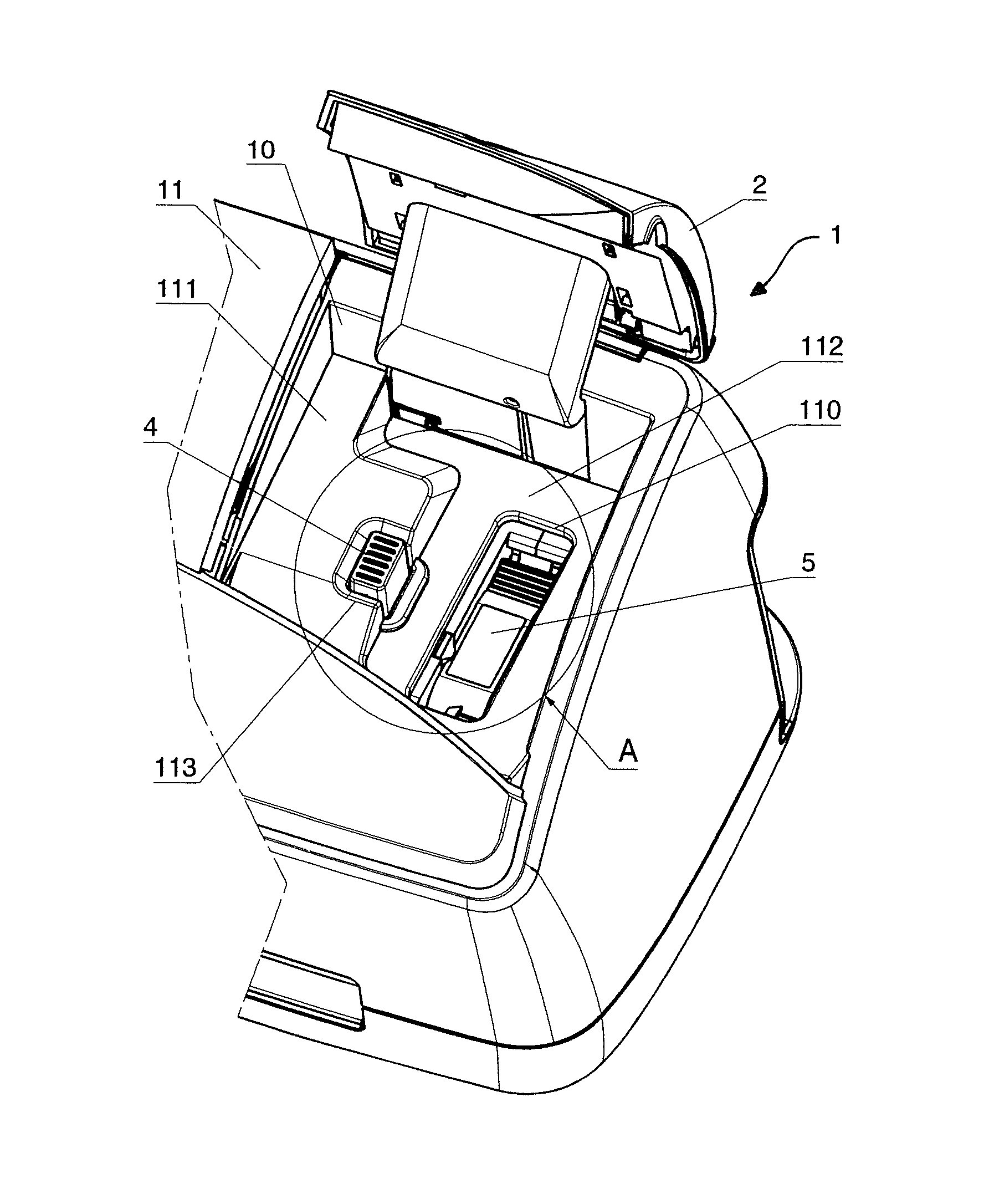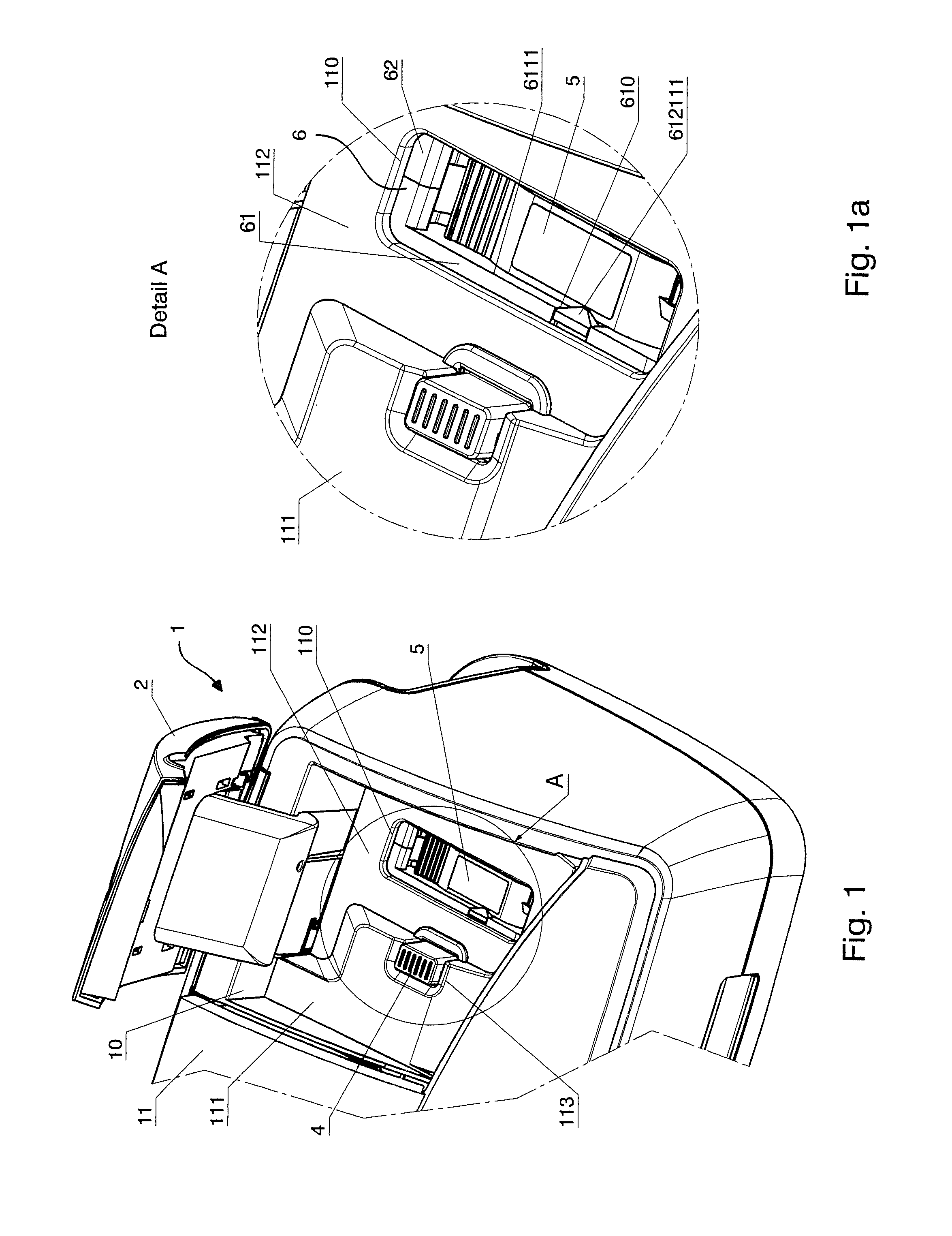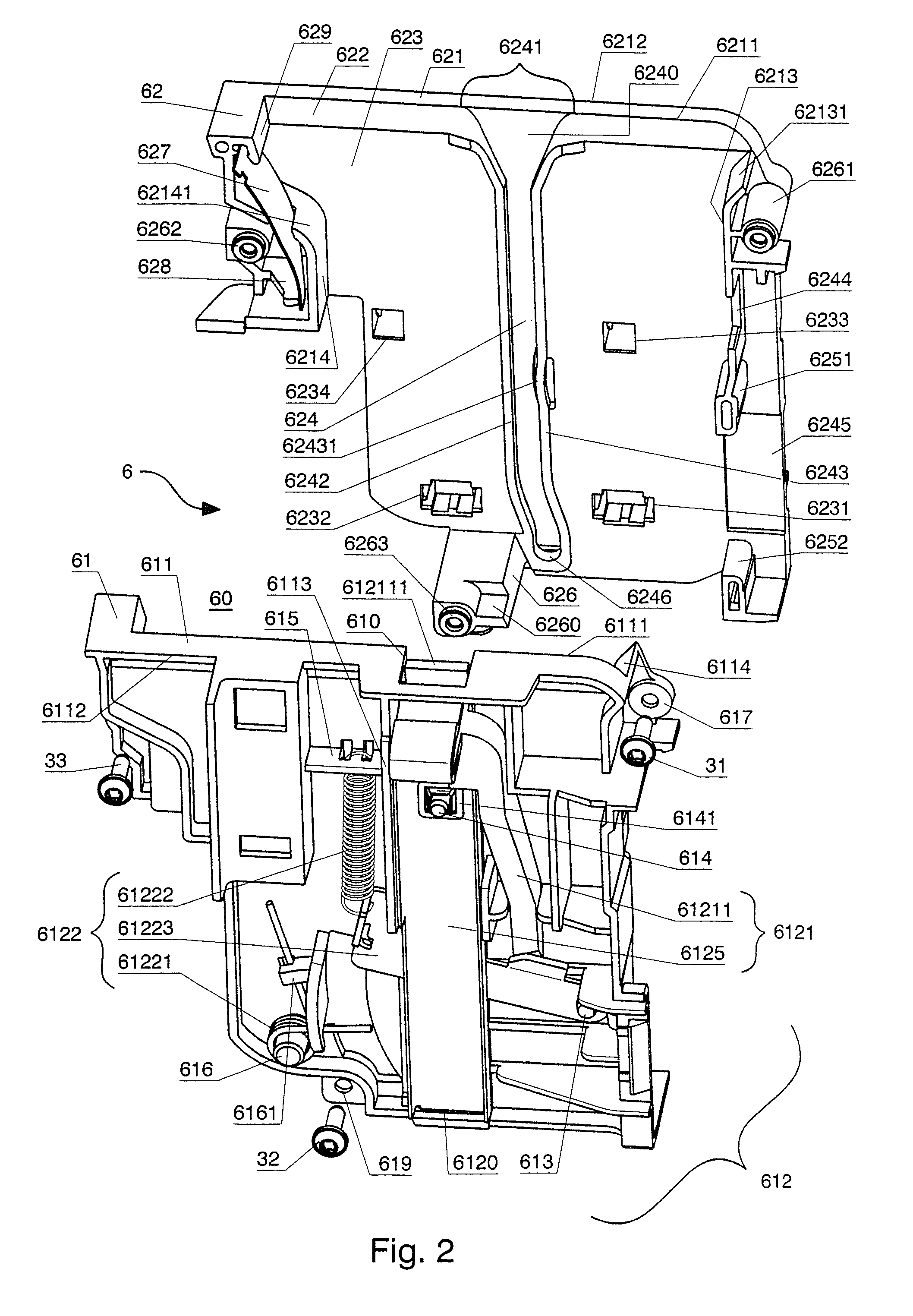Printing apparatus
a printing apparatus and printing head technology, applied in the field of printing apparatuses, can solve the problems of inability to prevent contact between the counterparts of the contact panel, inability to print ink, and inability to prevent contact, so as to avoid damage to the print head, reduce the effect of structural space, and suitable design shap
- Summary
- Abstract
- Description
- Claims
- Application Information
AI Technical Summary
Benefits of technology
Problems solved by technology
Method used
Image
Examples
Embodiment Construction
[0040]FIG. 1 shows a right half of a printing apparatus 1 with opened hatch 2 in a perspective view as seen from the top front right. A recess 10 is provided in the region which the hatch covers in the closed state. In this region, at a first level 111 under the top side of the upper housing part 11, the housing of the upper housing part 11 of the printing apparatus 1 extends further to the right, approximately to the middle of the opening 10, and then transitions into a second level 112. The second level 112 has a base in which a second window-like opening 110 is molded, for the exchange of the ink cartridge 5 inserted into a cartridge carrier. A third opening 113 in the base surface of the first level 111 is situated at the edge of the second level 112 of the upper housing part 11 of the printing apparatus 1. A cuboid actuator 4 projects upwardly out of the third opening 113. The upper edge of the cuboid actuator 4 is situated in line with the upper level edge and at approximately...
PUM
 Login to View More
Login to View More Abstract
Description
Claims
Application Information
 Login to View More
Login to View More - R&D Engineer
- R&D Manager
- IP Professional
- Industry Leading Data Capabilities
- Powerful AI technology
- Patent DNA Extraction
Browse by: Latest US Patents, China's latest patents, Technical Efficacy Thesaurus, Application Domain, Technology Topic, Popular Technical Reports.
© 2024 PatSnap. All rights reserved.Legal|Privacy policy|Modern Slavery Act Transparency Statement|Sitemap|About US| Contact US: help@patsnap.com










